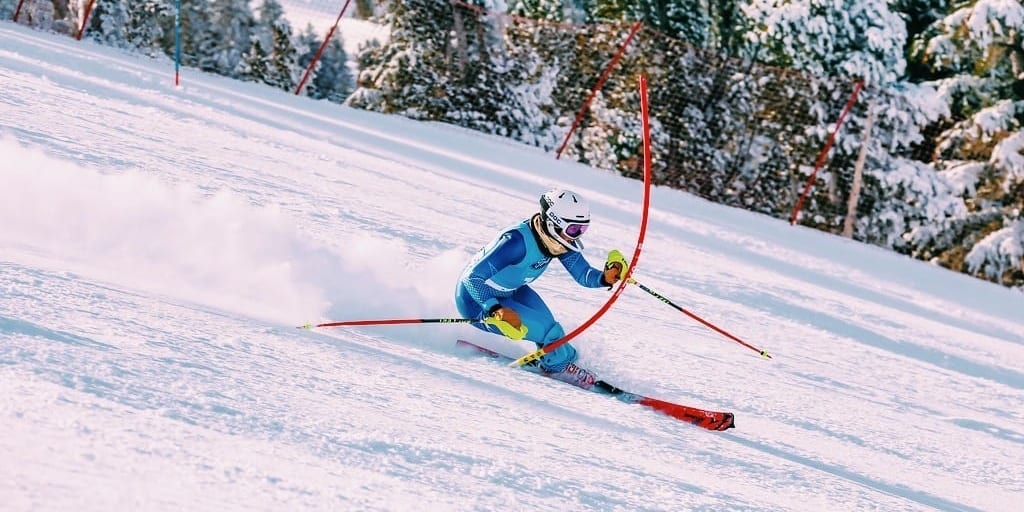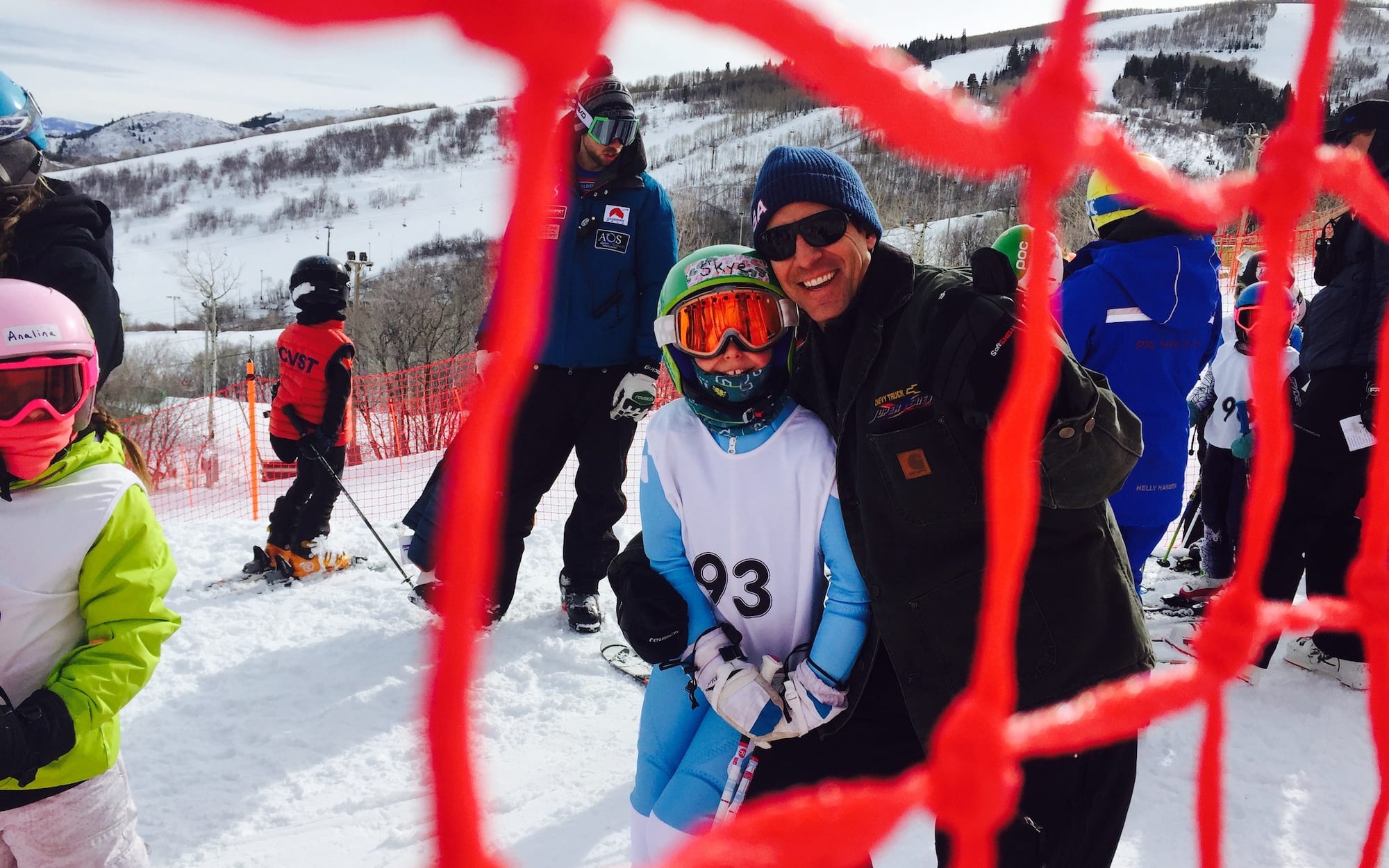The Method Behind the Madness of U.S. Ski Team Fees
If you were to take a poll of issues that get people the most riled up when it comes to ski racing in the United States, U.S. Ski Team fees would undoubtedly be close to, if not the top item on the list. Each off-season, the majority of national team athletes reach out to their respective communities and sponsors to raise the money necessary to be a full-fledged member of the U.S. Ski Team. Ranging from a few grand to tens of thousands of dollars, online donation pages, private fundraisers, personal gear sales, and filling out applications for grants are all methods used by athletes to scrape together these funds. The backlash this situation creates among the larger skiing community has been a thorn in U.S. Ski & Snowboard’s side for years.
“When I first made the Development Team, it was 10 grand,” says Ted Ligety. “Luckily, my parents could pay that and I ended up jumping straight to the World Cup but it still cost 10 grand and I think if it was much more than that, my Dad would have told me to go to college. If it was like it is now, there’s zero chance I would have pursued that; I would have gone to college and tried to make it to the point where I didn’t have to pay.”
What are these fees, really? How much are they and why are they necessary? Why do some athletes pay more than others? What exactly is this money going toward? All of these are valid questions which have resonated throughout the community that deserve straight answers.
U.S. Ski & Snowboard had undergone a rude awakening of sorts in the last nine months with athlete-driven movements and vocal criticisms of the organization capturing the minds of the community and leaving people with a bad taste in their mouths about the national governing body. The silver lining of all this turmoil has been athlete voices coming to the forefront of important issues like team culture and athlete-coach relationships like never before and the executive leadership at the Center of Excellence (COE) in Park City aiming to be the most transparent administration ever when it comes to hot-button issues like athlete funding.
Recently, the executive leadership at the COE sat down with Ski Racing Media (SRM) to discuss the financial picture of the current U.S. Ski Team and the vision for the future of funding the athletes on the teams of U.S. Ski and Snowboard.
“There have been a number of misperceptions that have been out there,” says U.S. Ski & Snowboard Vice President of Athletics, Luke Bodensteiner. “One is that the athlete fee pays for things other than their own personal travel costs like coaching or the Center of Excellence or infrastructure and we’ve tried hard to help the athletes understand that this is really a portion of their personal travel.”

Current A-Team member Alice McKennis paid a team fee each of the last two seasons. Image Credit: GEPA Pictures/Mario Buehner
According to Bodensteiner and U.S. Ski & Snowboard CEO, Tiger Shaw, the annual team fee that most national team athletes pay each year goes directly toward three things and three things only: flights, food, and a bed to sleep in on the road. The COE estimates that average travel costs per alpine athlete each year are in the neighborhood of $30,000, which includes off-season travel to camps in Mt. Hood, Mammoth, Europe, the Southern Hemisphere, and elsewhere. In total, U.S. Ski & Snowboard covers costs in excess of $100,000 per athlete for the costs of coaching, training, servicemen, therapists, and other expenses throughout the season.
It is important to understand that the exact cost of travel for each athlete will be different and that those costs will change year to year as flights fluctuate in price, athletes attend more or fewer projects, and other variables that change the cost of lodging.
Shaw explains that the annual team fee originates from the portion of their travel costs that the team can’t subsidize within their respective annual budgets.
“It’s all about the travel costs of an athlete on a team,” says Shaw “If you’re A-Team, we pay it all. The costs are not necessarily higher or lower for an A-Teamer than a B or a C. Some of this cost is absorbed within the budgets and that gets us down to the portion of the travel costs that isn’t subsidized by the team, it’s what’s left over that we can’t fund.”
Currently, U.S. Ski & Snowboard needs approximately $1.6 million to pay for travel costs across all disciplines each year, according to Shaw.
Most people who have been around ski racing in the U.S. know how this works. The A-Team is fully funded with B-Team athletes and below footing a bill that increases at each level. D-Team athletes pay the highest team fees.
In an effort to be as transparent as possible, the COE has supplied SRM with the current funding structure of the alpine team for the 2018-19 season and the average cost breakdown for each athlete, man or woman, at each team level.
To view the document in full, please click here.
Document key:
- MALP, WALP – Mens Alpine, Women’s Alpine
- COSTS OBJECTIVE – 2018-19 Team fee for an athlete that made objective ski team criteria
- COSTS DISCRETION – 2018-19 Team fee for an athlete that was named as a discretion pick
- High funding available – Average maximum available dollar amount of funding from internal sources that offset the annual team fee amount
- Base net cost – On average, what each athlete will actually pay if they take advantage of all of the internal funding available to them
- Counts objective – Number of objectively named athletes per team
- Counts discretion – Number of athletes named on discretion
According to the COE, the average out-of-pocket cost for an alpine athlete headed into this season went down by approximately 30 percent compared to the 2017-18 season.
Among all of those numbers are a few key take-aways. First, according to the document, although the A-Team is the only “fully funded” alpine team, the B-Team is in effect also a fully-funded team when the various internal funding sources are counted. In fact, on average, a B-Team athlete is actually slated to take home money at the end of the season to the tune of approximately $7,500. Shaw says that he had to issue IRS 1099 tax forms for several B-Team athletes last season because of the money they were able to raise that was in excess of their team fee.
“It can definitely work out like that,” says B-Teamer and 2018 Olympian, Ryan Cochran-Siegle. “For instance, this year I had rollover from last year’s fundraiser and that was essentially the money that I ‘made,’ which I moved into this year’s account.”
The second take-away is the internal funding sources themselves, namely the Beattie Travel Fund. While other internal funding sources vary from athlete to athlete like the number of World Cup starts an athlete has inside of the top 45, affecting the amount of FIS travel money they earn, or how USOC grants are only available to Olympians, the Beattie Travel Fund is available for all named athletes at all team levels.
What is different this year, however, is how the COE is communicating these options to the athletes. Something they have fallen short on in the past and an oversight that, by their own admission, rests squarely on their shoulders.
“We kind of created our own perceptual issue here by sending out the invitation letters at the beginning of the year that say, ‘Hey, your travel costs are going to be this much,’ but what we hadn’t told them in the past was how that is going to be offset by these different sources,” admits Bodensteiner. “The number that sticks in your head is the big number in the invitation letter.”
 Now, when an athlete is nominated to the U.S. Ski Team, an email is sent notifying them of their selection and lays out what will be provided to them as a national team athlete and what they owe, if anything, in a team fee. In past seasons, athletes were provided with a dollar amount and little or no information about what went into that fee, where the money gets spent, or what they can do to reduce the out-of-pocket cost.
Now, when an athlete is nominated to the U.S. Ski Team, an email is sent notifying them of their selection and lays out what will be provided to them as a national team athlete and what they owe, if anything, in a team fee. In past seasons, athletes were provided with a dollar amount and little or no information about what went into that fee, where the money gets spent, or what they can do to reduce the out-of-pocket cost.
“People had a really bitter taste about the funding thing and how it’s been done and communicated,” explains A-Team member Alice McKennis, who paid a team fee each of the last two season as a discretion pick to the team. “People felt really hurt by it and slighted by it just because the communication was really poor and it wasn’t explained to the athletes why they were paying this much. Talking with Luke about it and basically telling him that if they do share this information, of how much it actually costs, people aren’t going to be so bent out of shape over it because nobody had any comprehension or understanding of how much does it cost for a World Cup athlete with all their training and travel for this and that.”
This year, athletes were sent a large folder of information pertaining to the financials of U.S. Ski & Snowboard across all sports and ways they can help fund their seasons outside of the more traditional methods of independent fundraising.
“I think they’ve done a better job of providing that information and making it more clear and it’s made me feel a lot better about the whole situation because I paid $15,000 a year for the last two years and I didn’t really know what it was for,” McKennis adds. “I sort of knew, but it’s nice when you get the numbers and realize it’s actually not as bad of a deal as you thought.”

2018 Olympian and B-Team member Ryan Cochran-Siegle has used inside funding sources to cover the costs of his season. Image Credit: GEPA Picturea/Andreas Pranter
The Beattie Travel Fund, as it turns out, will likely be the key to solving the issue of fully funding athletes at U.S. Ski & Snowboard once and for all. Set up as an endowment, the Beattie Fund issues need-based aid to athletes, similar to the aid many colleges and universities offer their students. Just like in college, the athletes themselves must apply for grants from the Beattie Fund.
“This is why we’re trying to do this with an endowment,” Shaw says. “We’re trying to permanently cover the gap. That means going all over the country, sitting down, and asking people for a million dollars, or five million dollars.”
Typically, an endowment must be roughly 20-times larger than the amount taken out each year in order to be self-sustaining. Currently, Shaw and his staff have a goal of raising $20 million for the fund. As it stands now, there is approximately $4.6 million in the bank.
In the long run, the Beattie Fund will be a way for the COE to cover that $1.6 million without going out and finding that amount each year it is necessary. The catch is that it means asking for more money up front from donors and sponsors in the short term.
“The [U.S. Ski & Snowboard] Foundation goes out and raises a significant sum of money which takes an awful lot of time and energy, that money sits in the bank and is administered like an investment fund and is overseen by a completely independent team of people and then it pays out a certain sum of money every year,” explains U.S. Ski & Snowboard Communications Director, Tom Webb. “The time and effort that goes into raising that big pot of money means that we don’t then have to go replicate that year after year. It’s a very useful financial tool.”
“Do we want to get that team fee to zero?” adds Shaw. “Yeah, you’re damn right. We’re trying and there’s a plan to get there but that’s where we are now.”
For the foreseeable future however, team fees are here to stay until Shaw and his team are able to hit their funding goal for the Beattie Fund.
Editor’s Note: Stay tuned for more coverage on the issue of athlete funding, including more athlete perspective and the organizations that have cropped up to help address the issue.





















